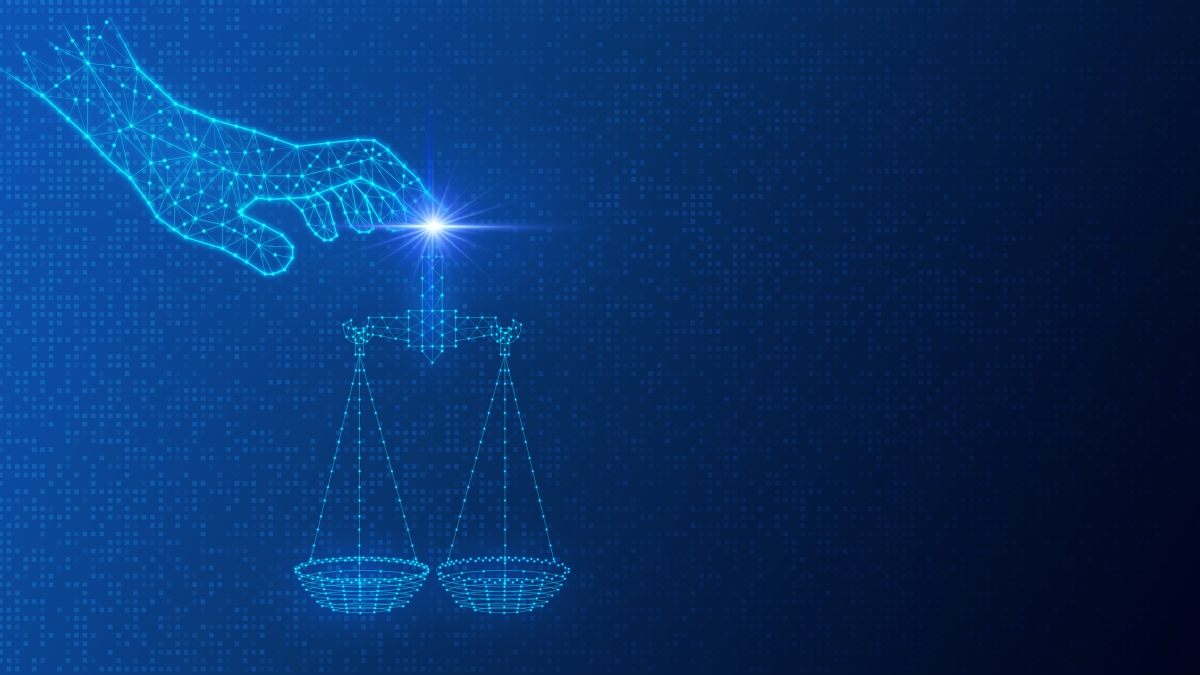Artificial intelligence is a powerful tool that has the potential to be used to revolutionize education, creativity, everyday life and more.
But as society begins to harness this technology and its many uses — especially in the field of generative AI — there are growing ethical and copyright concerns for both the creative industry and legal sector.
Tyson Winarski is a professor of practice with the Intellectual Property Law program in Arizona State University’s Sandra Day O’Connor College of Law. He teaches an AI and intellectual property module within the course Artificial Intelligence: Law, Ethics and Policy, taught by ASU Law Professor Gary Marchant.
“The course is extremely important for attorneys and law students,” Winarski said. “Generative AI is presenting huge issues in the area of intellectual property rights and copyrights, and we do not have definitive answers as Congress and the courts have not spoken on the issue yet.”
ASU News spoke to Winarski to learn more.
Editor's note: Answers have been edited for length and clarity.
Question: How do copyright and creative property laws protect those in the artistic industry?
Answer: Copyright is a form of intellectual property — along with patents, trademarks and trade secrets. Copyright protection grants the owner exclusive rights to reproduce, distribute, perform, display and create derivative works based on the original work. These rights generally last for the life of the author plus 70 years.
It's important to note that copyright protection does not extend to ideas, facts, systems or methods of operation. Additionally, certain works may be ineligible for copyright protection if they lack originality or are in the public domain.
Copyright generally prevents others from making verbatim copies of the copyrighted work or taking portions of the copyrighted work for use in other works by other authors. As such, the author and copyright owner have exclusive rights to make copies of their own works that they can charge for and earn a living from, such as an author selling books or a musician selling records.
Q: What are the ongoing conflicts between the creative industry and AI regenerative tools?
A: These issues highlight a complex intersection of technology, creativity and ethics. It's understandable that artists would be concerned about their work being used without proper compensation or credit, especially if it's used to train AI models without their consent.
On one hand, generative AI tools — like ChatGPT — have the potential to inspire creativity, assist in the creative process and even generate new works of art. They can be valuable tools for artists to explore new ideas and techniques. However, if these tools are being trained using copyrighted material without permission, it raises serious ethical questions about intellectual property rights and fair compensation.
Q: How is AI-generated content protected from claims of copyright infringement?
Claims of copyright infringement against online search engines and online libraries have not prevented these technologies from existing. The fair use doctrine may protect generative AI from charges of copyright infringement. Further, copyright is meant to prevent others from reproducing their work verbatim.
The whole point of generative AI is to not reproduce what others have done but create something new. As such, it is questionable whether the output of generative AI is infringing other copyrighted works.
While it is true that copyrighted works are in the generative AI database, the generative AI databases include all materials available from the internet. These databases were created by scraping all information off the internet.
The question is how much money would be owed to any single copyright owner for inclusion of its work in the large language model. And it may be problematic to prove that anyone’s copyright work was ever even used by the generative AI in creating generative output. Just because copyrighted data exists in the generative AI database does not mean that the database used it to create a particular output.
Q: Who owns the copyright for creative content generated by AI?
A: There is no copyright for works created by generative AI — they are all in the public domain. Under U.S. law, only human authorsWinarski recommends checking out the case of Naruto the monkey: Monkey selfie copyright dispute can get copyrights in writings or artistry that they create.
However, human additions to works created by generative AI are protectable under copyright. So, if a human edits the output of generative AI to inject his or her own personal creativity, copyright will extend to the human addition of the work, but not the material created solely by generative AI.
Q: Does the growth of AI necessitate the changing of existing laws in this domain?
A: Congress may need to consider updates to copyright laws to address the use of copyrighted material in training AI models. … The use of copyrighted material without proper authorization raises concerns about infringement and the rights of content creators.
Furthermore, Congress may need to examine the impact of generative AI on traditional notions of fair use and transformative works. Generative AI has the potential to create new works that are derived from existing copyrighted material, blurring the lines between original creation and derivative works.
In light of these challenges, lawmakers may need to explore amendments to copyright law that provide clarity and guidance on how to address the unique issues raised by generative AI technology. This could involve defining new categories of authorship, establishing clear rules for the use of copyrighted material in AI training and updating fair use provisions to accommodate emerging forms of creativity and expression.
More Law, journalism and politics
Can elections results be counted quickly yet reliably?
Election results that are released as quickly as the public demands but are reliable enough to earn wide acceptance may not always be possible.At least that's what a bipartisan panel of elections…
Spring break trip to Hawaiʻi provides insight into Indigenous law
A group of Arizona State University law students spent a week in Hawaiʻi for spring break. And while they did take in some of the sites, sounds and tastes of the tropical destination, the trip…

LA journalists and officials gather to connect and salute fire coverage
Recognition of Los Angeles-area media coverage of the region’s January wildfires was the primary message as hundreds gathered at ASU California Center Broadway for an annual convening of journalists…



